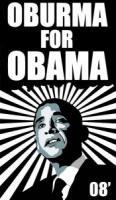 I love art and I love rock, but to say that “art rock†has usually been neither would be an understatement. This problem calls to mind Matt Groening’s French sex comedy paradox: the French are funny, sex is funny, and comedy is funny, yet French sex comedies are are never funny. I know, there are good exceptions, from Robert Fripp in his livelier moments to Brian Eno, when he’s not busy recording ambient seal mating noises to play at low volume in European airports. But if art rock is usually a fever, my most reliable cure for three decades running has been Boston’s Mission of Burma, a band that still cranks its amps to eleven even though its guitarist has tinnitus. How “art rock†is Mission of Burma? Well, they’ve recorded two songs about Max Ernst. But unlike, say, Don McLean whining about how nobody loved Vincent Van Gogh, Burma’s art songs are alive with a visceral, spiritual connection to their subject matter. “Dada-dada-dada-dada-dada-dada,†it turns out, makes for one rocking chorus.
I love art and I love rock, but to say that “art rock†has usually been neither would be an understatement. This problem calls to mind Matt Groening’s French sex comedy paradox: the French are funny, sex is funny, and comedy is funny, yet French sex comedies are are never funny. I know, there are good exceptions, from Robert Fripp in his livelier moments to Brian Eno, when he’s not busy recording ambient seal mating noises to play at low volume in European airports. But if art rock is usually a fever, my most reliable cure for three decades running has been Boston’s Mission of Burma, a band that still cranks its amps to eleven even though its guitarist has tinnitus. How “art rock†is Mission of Burma? Well, they’ve recorded two songs about Max Ernst. But unlike, say, Don McLean whining about how nobody loved Vincent Van Gogh, Burma’s art songs are alive with a visceral, spiritual connection to their subject matter. “Dada-dada-dada-dada-dada-dada,†it turns out, makes for one rocking chorus.
I’m only slightly embarrassed that my most-played “new†album of 2008 was Matador’s re-release of Mission of Burma’s 27 year-old Signals, Calls and Marches. Meticulously produced by Ace of Hearts svengali Rick Harte, it doesn’t sound remotely dated. Since the Zeroes have already seen the likes of Interpol, Kaiser Chiefs, Ted Leo, M.I.A., and just about everyone else channeling the early Eighties underground, the time is ripe for a Burma renaissance. Mission of Burma is enjoying a surprisingly productive second life since its 2002 reunion; if you think the band is a nostalgia act, play 2006’s scorching The Obliterati right after any other recent release. One of the best shows I saw in 2008 was Burma’s San Francisco performance of everything from Signals, which reached even further into the band’s back pages with the dark and mysterious “Peking Spring.â€
Matador’s 2008 reissue of Signals actually improves on and completes the original version. This year’s model adds four tracks to the original EP’s length, including both sides of one of my all-time favorite singles (Clint Conley’s wonderfully grumpy grad school anthem, “Academy Fight Song,†and Roger Miller’s frenetic “Max Ernstâ€) and two formerly instrumental tracks from the same sessions (“Devotion†and “Executionâ€) that the middle-aged Burma gang gave a vocal makeover sometime after recording The Obliterati. Without the dynamics of the original Signals‘ signature number, “That’s When I Reach for My Revolver,” the reworked songs still blend beautifully, sharing a style that has one foot in the conservatory and the other in the mosh pit. The sum total is thirty-five minutes of heavenly bliss disguised as punk rock. About the only thing I miss is the lyric sheet from the original release, which arranged all the words in alphabetical order.
Mission of Burma, “Academy Fight Song”
Mission of Burma, “This is Not a Photograph”
 Also worth owning are Matador’s re-releases of Burma’s 1982 album Vs., whose rawer aesthetic comes closer to the band’s live sound, and the then-posthumous 1985 live album The Horrible Truth About Burma. The latter’s two covers—the Stooges’ “1970†and Pere Ubu’s “Heart of Darkness‖make fitting bookends for Burma’s aesthetic reach. All the reissued CDs also feature DVDs and concert-footage from early Burma, circa 1979-1983. And if you want to go back even further, YouTube now has footage of Miller and Conley in their pre-Burma band, Moving Parts, doing a prototype version of “Max Ernst.†The keyboardist who looks like he floated in from a Yes concert is Erik Lindgren, who went on to join Roger Miller in his avant-garde ensemble Birdsongs of the Mesozoic. Lindgren also played in the Space Negros, a band responsible for of one of the all-time great album titles, The Space Negros Play Generic Ethnic Muzak Versions of All Your Favorite Punk/ Psychedelic Songs from the Sixties.
Also worth owning are Matador’s re-releases of Burma’s 1982 album Vs., whose rawer aesthetic comes closer to the band’s live sound, and the then-posthumous 1985 live album The Horrible Truth About Burma. The latter’s two covers—the Stooges’ “1970†and Pere Ubu’s “Heart of Darkness‖make fitting bookends for Burma’s aesthetic reach. All the reissued CDs also feature DVDs and concert-footage from early Burma, circa 1979-1983. And if you want to go back even further, YouTube now has footage of Miller and Conley in their pre-Burma band, Moving Parts, doing a prototype version of “Max Ernst.†The keyboardist who looks like he floated in from a Yes concert is Erik Lindgren, who went on to join Roger Miller in his avant-garde ensemble Birdsongs of the Mesozoic. Lindgren also played in the Space Negros, a band responsible for of one of the all-time great album titles, The Space Negros Play Generic Ethnic Muzak Versions of All Your Favorite Punk/ Psychedelic Songs from the Sixties.
Moving Parts, “Max Ernst”
Mission of Burma, “Peking Spring”
Mission of Burma, “All World Cowboy Romance”
Wonder why Burma is practically alone in being able to re-unite 20 years later and keep all of the good stuff going on. Not a touch of lame-ness. Never seem old-and-in-the-way. It’s like they took a 20-yr cigarette break and picked right up where they left off.
Thanks for the tips on the re-releases. Sounds like I’ve got some catching up to do.
P.S. Loved their “O-Burma for Obama” hand-written amp placard during recent tour.